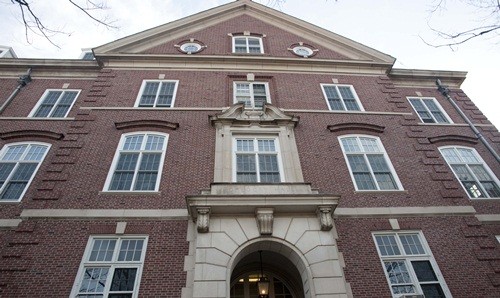Counseling and psychiatric services at Midwest universities are buckling under the increased demand from students — many of whom are entering schools with more serious illnesses than ever seen before.
Indeed, many counseling programs are failing to meet the nationally accepted standards for counselor-to-student ratios, leading to longer waits for assistance and a limited number of sessions, an investigation by a consortium of Midwest journalism faculty and students has found.
The consortium also found that many campuses have not implemented key recommendations made to improve campus safety and mental health services in the wake of the fatal shootings at Virginia Tech in 2007 and at Northern Illinois University in 2008.
In addition, the consortium discovered that counseling centers are juggling limited staff and cutting programs because of shrinking budgets.
All this comes at a time when counselors are seeing more students entering college with histories of mental illness.
In the past, “if someone had a mental illness, college was not a feasible option,” said Christy Hutton, programming and communications coordinator for the University of Missouri’s counseling center. “They either received long-term treatment for their illness or they were placed in a closet and hidden from the rest of society.”
Now, she said, it is possible for most students to balance outpatient care and college coursework because of the treatment and medication they received before they entered college.
The five-month examination of programs was conducted by the Investigative Journalism Education Consortium, a network of journalism faculty and students at Midwest universities and colleges. The project is funded by the Robert R. McCormick Foundation based in Chicago.
The consortium reviewed services at more than two dozen campuses in Wisconsin, Illinois, Indiana and Missouri. In its ongoing review, the consortium found that centers often fell far short of the number of mental health providers recommended by the International Association of Counseling Services.
The association’s recommendation for staffing levels calls for college counseling centers requires a minimum of one mental health provider for every 1,500 students. Yet most campuses have ratios of one provider for more than 2,000 students, with some having ratios as high as one mental health provider for every 16,000 students.
As a result, students in need wait weeks for appointments and get only a few sessions. In some cases, outreach programs and preventative services have been cut, reduced or turned over to trained students to run.
“It means making tough choices,” said Carla McCowan, director of the counseling center at University of Illinois Urbana-Champaign. “It’s a nick here and a nick there because I can’t cut people, really. I can’t cut clinicians.”
The situation is frustrating and worrisome for many students.
For example, when University of Wisconsin-Madison senior Rachel Steidl sought counseling services this year, she was assessed the same day under a new process at her Madison campus. But because her immediate needs weren’t deemed urgent, she was asked to wait three weeks for her next appointment.
“If my depression gets worse, it could escalate,” Steidl said. “I want to avoid getting to the point where I have to call the crisis hot line.”
As part of its review, the consortium culled through data and documents and conducted numerous interviews with mental health providers, experts, university administrators and students.
Among the consortium’s findings:
- Four years ago, a University of Wisconsin System subcommittee recommended that, in the short term, its four-year institutions try to meet 75 percent of the association’s staffing standard or one mental health provider for every 2,000 students. The average is now is about one mental health provider for every 2,027 students across its 13 campuses. But when students at the Wisconsin Center for Investigative Journalism used the subcommittee’s methods to re-calculate ratios for 2010-2011, it found that five campuses failed to meet that standard.
- In Missouri, the University of Missourice-Kansas City has seen a 175 percent increase in the number of students seeking services over the past decade, while the University of Missouri-Columbia saw 80 percent more students seeking services over the past five years.At the Columbia campus, there were 602 students seen for individual, couple or group therapy in the 2006-2007 school year. For the 2010-2011 school year, there were 1,091 students seen.At the Kansas City campus, there were about 830 students seen for therapy in the 2010-2011, up from 300 students during the 2000-2001 school year.On average, University of Missouri says it has one mental health provider for every 1,900 students.
- In Indiana’s public universities, counseling centers have been consistently understaffed. As a result, trainees are heavily used to provide clinical services. Ratios range from one mental health provider for every 2,208 student to one mental health provider for more than 16,000 students.
- Southern Illinois University Carbondale has one mental health provider for every 3,000 students, while the ratio at the University of Illinois at Urbana-Champaign is one counselor for every 2,100 students.
“We start to get a wait list and what that means is that a student comes in this week but we won’t have any ongoing openings for three more weeks,” said Rosemary Simmons, director of counseling at Southern Illinois University Carbondale.
Simmons added, “For the past 10 years, we have had a built-in triage system and so we really make an effort to meet every student when they come in to make an initial assessment.”
The consortium also looked into other issues related to mental health on campus, including psychiatric treatment and the creation of behavioral or threat assessment teams.
In some instances, it was difficult to assess problems because campuses did not provide information despite repeated requests.
National experts say the challenges at Midwest universities reflect national trends.
A 2011 National Survey of Counseling Center Directors found an influx of students with serious psychological problems including large increases in crisis issues that require an immediate response and an increase in students arriving on campus already on psychiatric medication.
